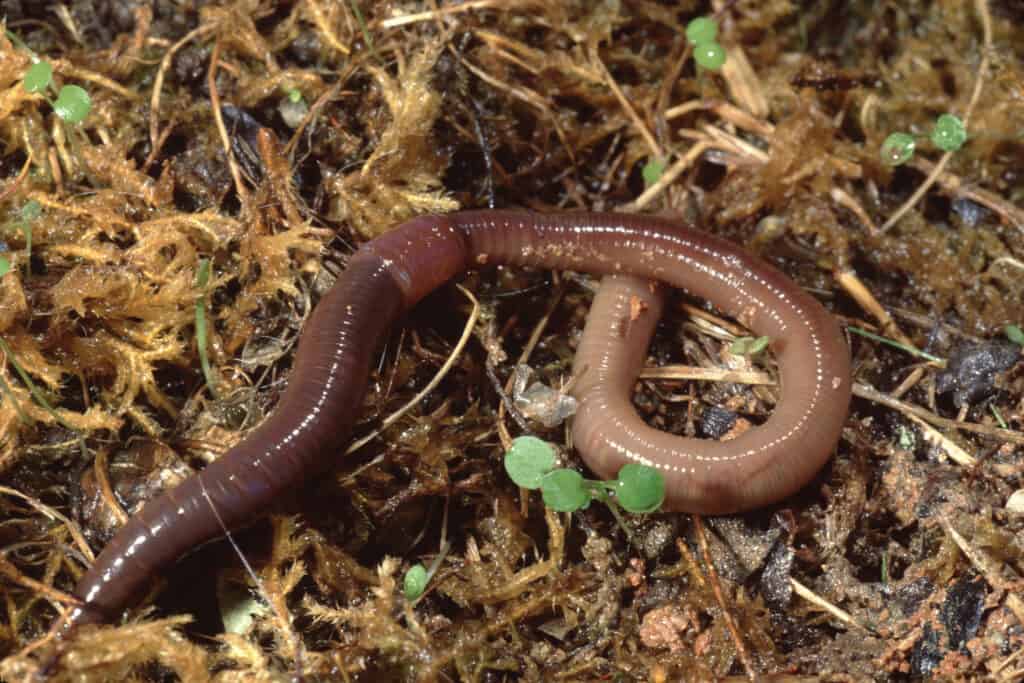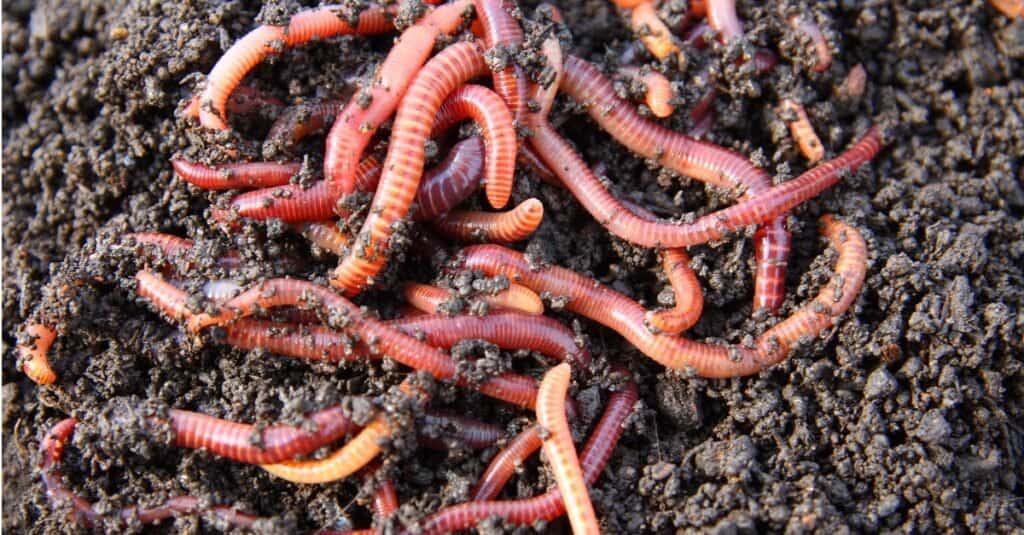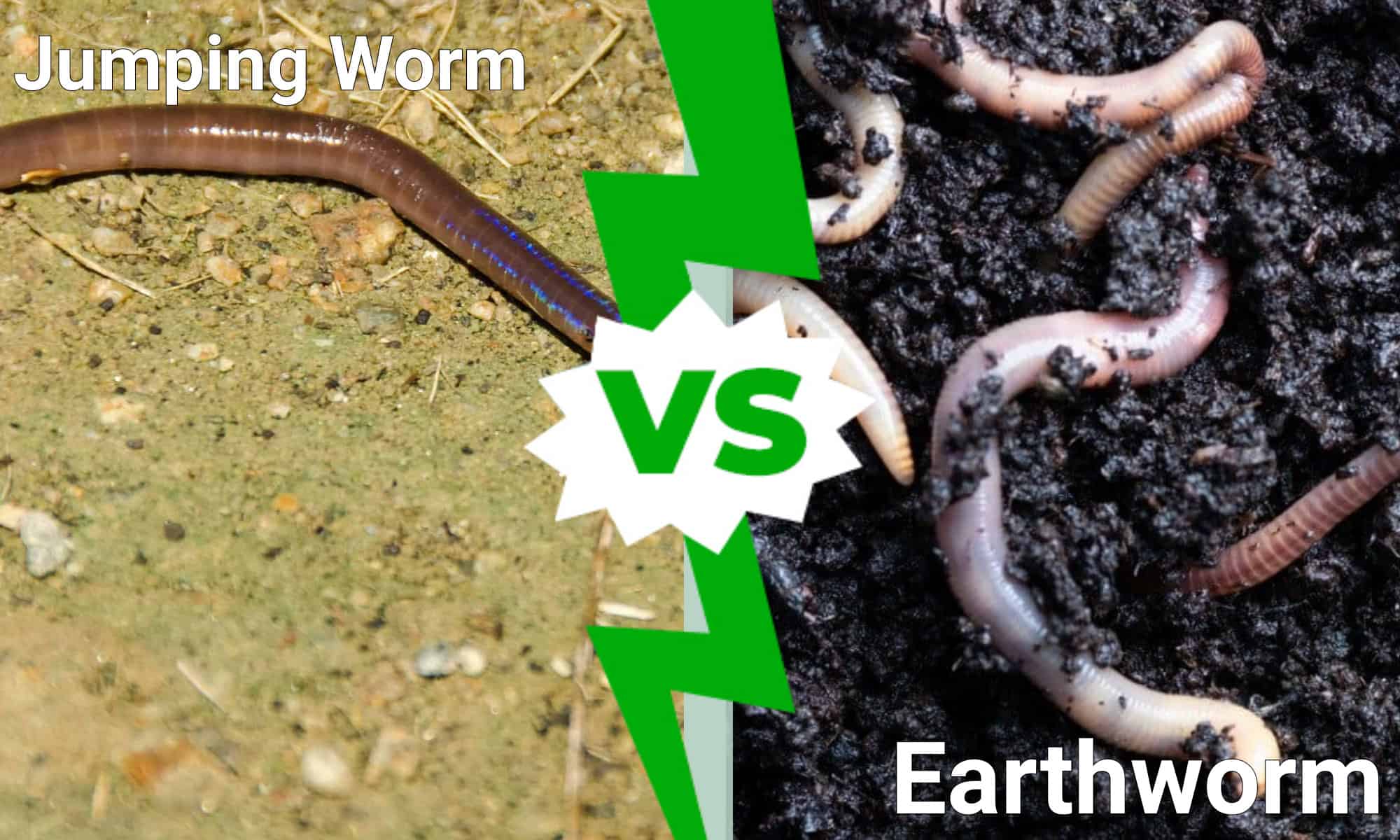Have you ever heard of jumping worms? This invasive species has been causing quite a stir in the world of soil ecology and for good reason. Not only does the jumping worm have the ability to quickly alter the composition of the soil, but the species also poses a serious threat to common earthworm populations. We’ll explore the four key differences between jumping worms and earthworms. And we’ll delve into the impact that these wriggly creatures have on our ecosystems. Get ready to jump into the fascinating world of worms!
Jumping Worms
Jumping worms (Amynthas agrestis) are also known as Asian jumping worms or crazy worms. They are invasive terrestrial worms that have been introduced to North America from Asia. They are called jumping worms because of their unique behavior of wriggling and thrashing vigorously when disturbed. Jumping worms are typically smaller than common earthworms. They are also more active and move quickly, making them difficult to catch or control.
Jumping worms have become a concern because of their negative effect on soil health and plant growth. They alter soil structure and nutrient availability, leading to changes in plant community composition and reduced soil fertility. They are difficult to control once established. Jumping worms can reproduce quickly and survive in a variety of soil types and conditions.
It’s important to take steps to prevent the spread of jumping worms to new areas. Accidental transportation of the larvae in soil or organic material from infested areas should be avoided. Cleaning tools and equipment before and after use can also ameliorate their spread.

Jumping worms are typically smaller than common earthworms.
©iStock.com/Arrlxx
Earthworms
Lumbricus terrestris also known as European nightcrawlers are not native to North America, either. The last glacial period, which ended 10,000 years ago, wiped out native earthworm populations in North America. The earthworms that are now found in North America were introduced by European settlers. They brought them over in the soil of potted plants in the 17th and 18th centuries. Since then, European earthworms have become widespread in North America. They play a crucial role in soil processes and ecological functions.

Though European earthworms are a non-native species, they are not considered an invasive species.
©Liz Weber/Shutterstock.com
Jumping Worm vs. Earthworm: Key Differences
Jumping worms differ from earthworms in four principal ways: appearance, reproduction, mobility, and appetite for destruction. Understanding these differences is key to identifying and controlling these obnoxious pests.
Appearance
Jumping worms are generally smaller than the common earthworm.
While the size of jumping worms can vary depending on the species, they are typically shorter and thinner than earthworms. Adult jumping worms measure between 0.4- 3 inches (1-8 cm) in length and less than 1/10 of an inch (2mm) in width. In contrast, common earthworms typically measure between 2-10 inches (5-25 cm) long and 0.08-0.2 inches (2-5 mm) wide.
Jumping worms have a smoother, more opaque body, while earthworms have a more cylindrical, segmented body with a slimy exterior. Jumping worms also have a more pronounced head and lack the prominent clitellum or saddle-like structure, that is visible in earthworms.
Lumbricus terrestris are generally darker in color than jumping worms. Sometimes Lumbricus terrestris will have a reddish hue.
Reproductive Habits
Jumping worms can reproduce at a much faster rate than earthworms. While most earthworm species have a relatively slow reproductive rate, with individuals typically taking up to a year to reach sexual maturity. Jumping worms can reproduce much more quickly. A hatchling jumping worm will begin to reproduce in approximately 60 days. Jumping worms can reproduce twice as fast as earthworms, with populations doubling in just a few months. This rapid rate of reproduction is one of the factors that make jumping worms such a formidable invasive species, as they can quickly outcompete and displace beneficial earthworms.
Parthenogenesis
Jumping worms are capable of reproducing parthenogenically, which means that they can produce offspring without mating. This process involves the female jumping worm producing eggs that develop into embryos without being fertilized by a male. Parthenogenesis is an advantageous reproductive strategy for jumping worms, as it allows them to rapidly increase their population size without the need for a mate. This can be especially beneficial in new habitats where jumping worms have been introduced but where suitable mates may be scarce.
Earthworm Reproduction
Lumbricus terrestris are hermaphroditic, which means that each individual has both male and female reproductive organs. However, they typically do not self-fertilize and require a mate to reproduce.
After mating, each earthworm forms a cocoon around its clitellum, which is a saddle-like structure near the anterior end of its body. As the cocoon passes over the worm’s body, it picks up eggs from the female reproductive organs and sperm from the male reproductive organs.
The cocoon then seals shut and is deposited in the soil. Each earthworm produces up to 50 cocoons per year. Each cocoon contains multiple embryos. Earthworm reproduction is an important factor in soil ecosystems, as it contributes to nutrient cycling and soil health. The waste products of earthworms, including their castings, are rich in nutrients and help to enrich the soil, supporting plant growth.
The movement of earthworms through the soil creates tunnels and burrows, which can improve soil structure and drainage, as well as provide pathways for plant roots to grow.

The movement of earthworms through the soil creates tunnels and burrows, which can improve soil structure and drainage, as well as provide pathways for plant roots to grow.
©iStock.com/Mik122
Jumping Worm vs. Earthworm: Mobility
Jumping worms are known to be highly mobile and can travel much greater distances than earthworms. This is because jumping worms are able to rapidly move across the soil surface using a unique jumping behavior, which allows them to cover a lot of ground quickly. Jumping worm cocoons will hitchhike on vehicles, gardening equipment, and other materials.
This allows them to be transported over long distances, making them highly effective invaders. Jumping worms quickly spread to new areas and establish populations far from their original introduction site.In contrast, most species of earthworms are relatively slow-moving and typically travel short distances within their home range.
While they may move through the soil to find food or suitable habitats, they are not generally known for their ability to travel long distances.
Jumping Worm vs. Earthworm: Appetite
Jumping worms are voracious eaters that feed on the organic matter found in soil, including leaf litter, decomposing plant material, and other soil organisms. Unlike common earthworms that ingest soil and organic matter together, jumping worms prefer to feed on the organic matter alone, leaving behind a distinctive grainy, coffee-ground-like material.
Jumping worms are able to consume large amounts of organic matter quickly, which can cause significant changes in the soil. By breaking down leaf litter and other organic matter more rapidly than earthworms, jumping worms alter the structure and composition of the soil, leading to changes in nutrient cycling, soil pH, and the availability of microorganisms.
In addition to their feeding habits, jumping worms are also known to be highly competitive with other soil organisms, including earthworms. This exacerbates the negative effects of jumping worms as they displace beneficial earthworm populations.
Earthworms
Lumbricus terrestris are important decomposers in soil ecosystems, and their feeding habits play a crucial role in nutrient cycling and soil health. Earthworms ingest soil and organic matter, such as decaying plant material.
As earthworms move through the soil, they create tunnels and burrows, which can improve soil structure and drainage, as well as provide pathways for plant roots to grow. The waste products of earthworms, known as castings, are rich in nutrients such as nitrogen, phosphorus, and potassium, which can enrich the soil and promote plant growth.
Earthworms are able to consume large amounts of organic matter relative to their body size, with some species able to eat up to 1.5 times their body weight each day. However, earthworms are selective feeders, and they prefer certain types of organic matter over others.
Earthworms prefer leaf litter over grass, and they may also selectively feed on certain types of fungi or bacteria. Their feeding habits help to promote healthy soil and support plant growth.
Are Jumping Worms the Same as Nightcrawlers?

Jumping worms are similar to nightcrawlers as they are both harmless to people.
Jumping worms get their name from their snake-like, jumping motion, especially when they’re agitated or ready for . Jumping worms resemble nightcrawlers (Lumbricus terrestris), but they have a distinctive light-colored ring that encircles their body, making it more noticeable than in other earthworms.
Similar to nightcrawlers, jumping worms are harmless to people. Although, jumping worms can significantly degrade soil quality.
Additionally, jumping worms do have a brain that connects to nerves throughout their skin and muscles.
These nerves can sense light, vibrations, and they may even be able to detect certain tastes. The muscles in their bodies move in response. Jumping worms jump and wiggle when disturbed as a defense mechisium that’s similar to a snake. They simply want to get away from harms way.
Jumping worms can actually be pretty distructive in comparison to other earthworm species and feed in large groups in the upper soil layer, devouring organic matter and replacing it with their waste.
Thank you for reading! Have some feedback for us? Contact the AZ Animals editorial team.








